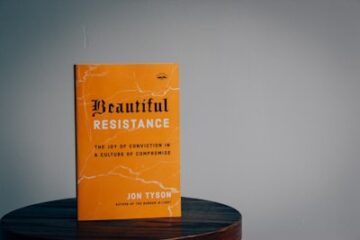TIPS AND TRICKS
- OPEN BOOK -

WARNING!!!! ACTHUNG!!!! ADVARSEL!!!!! CAUTION!!!!! ATENCIÓN
USE QUICK TIPS WITH CARE!
Easy Tricks are no replacement for good technique and risk taking. Use these little tricks ONLY WHEN THEY ARE ABSOLUTELY, MIND-BENDINGLY NECESSARY.
Whatever…
You won’t listen t me anyway. BUT DON’T COME CRYING TO ME when your friends are saying “We saw you do that lame little trick in that scene the other day… and the week before you did the same thing. You really aren’t as fun to watch as the moth that flew into my room the other night.”
OPEN BOOK
I’m amazed at how many people want to do “Character Work” whenever I ask, “what do you want to explore today?”
Look around you. Character inspiration is everywhere. Base a character on someone you know. Change the shape of your body and see what that does to you. Study someone from history and bring some qualities to life. Pick an age and play it. Or, read the title of a book.
 Have you ever been to someone’s home who has a collection of books on the shelf? You look at the titles and immediately get an idea of who the person is. A book shelf full of history books and role playing manuals gives you an immediate picture of who reads these. And that person is completely different from the owner of romance novels, self help manuals and cat care books.
Have you ever been to someone’s home who has a collection of books on the shelf? You look at the titles and immediately get an idea of who the person is. A book shelf full of history books and role playing manuals gives you an immediate picture of who reads these. And that person is completely different from the owner of romance novels, self help manuals and cat care books.
This makes sense. We surround ourselves with the values of our personality. Why invest time reading a book that doesn’t reflect on us or our interests? We are what we do, read, eat, and experience.
Of course one book gives a fairly superficial image of the reader. When there’s an unexpected book about Social Engineering or Quantam Mechanics on the shelf populated with doll making manuals, we know there’s a more complex character who reads these. Our story telling brain wants to combine the puzzle pieces into a coherent image.
To keep the tip simple however, we’ll focus this exercise on the title of one book at a time.
HERE’S THE TIP
- Early in the scene, have your character Carry a book, Read a book, Buy a book.
- Let someone else read the title.
- Whatever title they read, allow it to define your character.
“How to overthrow governments!”
“31 poisons that can’t be detected after death”
“Care for your Latex Companion“
“GORGONDA – The true religion“
“How to grow more potent Canabis“
“Hiding Evidence for Dummies.”
Your partner has given you a gift. Your character has that book for a reason. Make sense of it. Embrace the character who would WANT that particular book.
Your partner created something that has value for your character. They helped define what the character wants and who it is.
This trick isn’t restricted to book titles. If you walk into an office scene and define the art on the wall, you are helping your partner define their character.
Imagine the qualities you endow in your partner when you walk into his office and immediately look at the painting on the wall in an embarrassed way and spend the rest of the scene sneaking glances at the image and looking away as you shyly say to your boss, “There’s a lot of… nudity… in your portrait sir.”
The improviser playing the boss has a brilliant rush of excitement as they attempt to justify these new qualities in themselves that they hadn’t imagined a few seconds earlier.
——
The trick can be used at any time, but it best to bring it into scenes early.
VARIATION:
A variation and great way to practice this technique can be to start a scene with a person pulling imaginary books off a shelf. The offstage performers (or audience) speak spontaneous titles so everyone can hear them.
If the person in the library isn’t inspired by the title, they put the book back and grab another. A different person reads the title.
If the onstage person is inspired, they buy the book or check it out of the library and continue with the scene. There’s no need to talk about the book after that. We all know what the book implies. Play the possibilities.
—–
AUDIENCE AS BOOKS
 In performance, audience members can be invited to give titles to books. Let them know that they will supply the titles if the performer faces their section of the audience.
In performance, audience members can be invited to give titles to books. Let them know that they will supply the titles if the performer faces their section of the audience.
Simply walk along the front edge of the stage. Audience members in front of the performer can yell out their suggestions while the scene progresses. (You don’t have to accept the first suggestion. You can put the book back and move on.)
If the audience is brave, you could open up the imaginary book to a specific page and they speak out what you are reading.
When you are inspired, begin/continue the scene.
—-
THE LIBRARY FORMAT
As a long play starter, in a format called THE LIBRARY – each performer looks for a book as we described above where the audience offers book titles. (again, probably best if titles are how to or instructional in some way).
When the performer has the book they are inspired by, they sit down and “read to themselves” while the others are getting their books. This spontaneous cast of characters will interact in and out of the library and develop lives based on the values imposed on them by the books they borrowed.
—-
Find a book. Define a book title, read the title of the magazine article someone is reading. It’s a quick trick to inspiring character traits and objectives.
Have fun.




0 Comments